Fingerprint of climate change shows up in some extreme weather
Climate change can’t cause an event, but it has been influencing a growing number of them
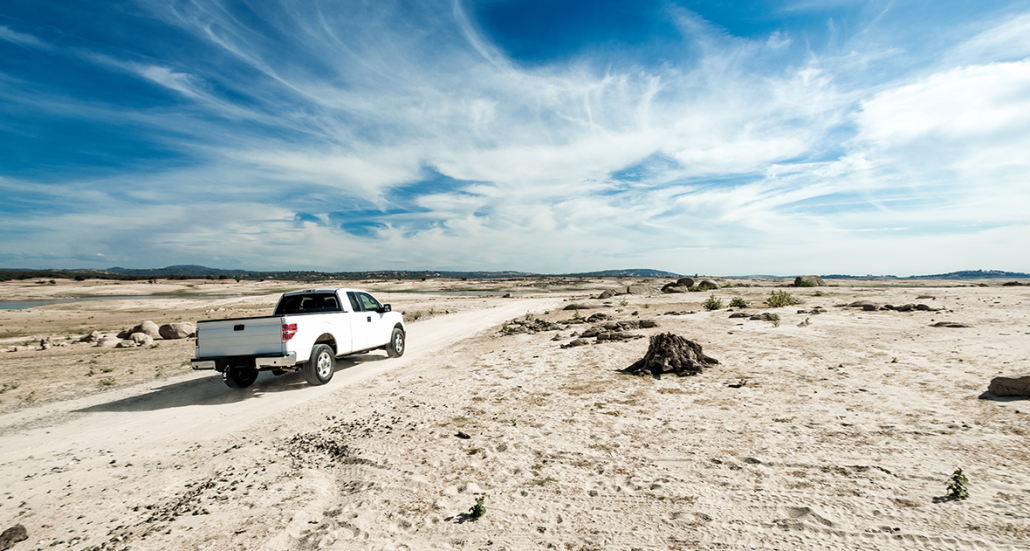
A photo of Folsom Lake in California from October 2015. There is no water to be seen. A white pick-up truck is driving diagonally from the left to the right along a dry path.
MCMLXXXI/iStockphoto
This is the second in a 10-part series about the ongoing global impacts of climate change. These stories will look at the current effects of a changing planet, what the emerging science suggests is behind those changes and what we all can do to adapt to them.
In late 2013, something big and strange showed up in the Gulf of Alaska. Scientists called it “the Blob.”
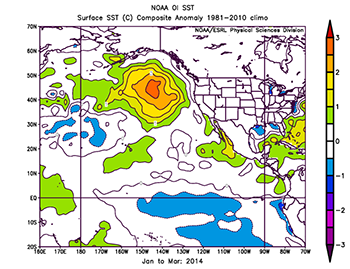
It wasn’t a monster. Instead, it was a monstrous amount of heat in the surface water of the northern Pacific. And it didn’t begin to dissipate until 2016. Scientists soon observed the same heat-up farther south. It appeared off the coasts of states such as Oregon and California. In some regions, the water measured 6 degrees Celsius (10 degrees Fahrenheit) warmer than usual.
Around that same time, hundreds of tufted puffins turned up dead on a small island in the Bering Sea. They’d starved. In the town of Savoonga, Alaska, villagers caught a bowhead whale in open water. In previous years, that had been impossible because all of their local seawater had been covered by ice. In other parts of the gulf, people who usually fished through holes cut in the ice couldn’t — because the ice wasn’t there. And toxic algae bloomed along the Pacific coast.
Researchers suspect the Blob was linked to these events. They can’t say for certain. But they now know this Blob was no freak warmup. Two factors combined to make it possible, scientists reported in 2016. One was the natural variability, or ups and downs, in climate. The other was “climate change.” This was an unnatural perturbation brought on by human activities.
Importantly, without climate change, the heat that baked Alaska would not have become such a scorcher.
“We would not have had temperatures of that magnitude without climate change,” says John Walsh, who led the study. He’s a climate scientist at the International Arctic Research Center. The center is part of the University of Alaska in Fairbanks.
Researchers like Walsh want to know: How does human-driven — or anthropogenic (AN-throh-puh-GEN-ik) — climate change affect individual weather events, such as hurricanes, heat waves and rainstorms? These scientists are developing ways to recognize and measure those connections. Investigations that connect climate to extreme weather are called attribution (Aa-trih-BU-shun) studies. The Blob was one of the first weather events that scientists attributed to climate change caused by human activities.
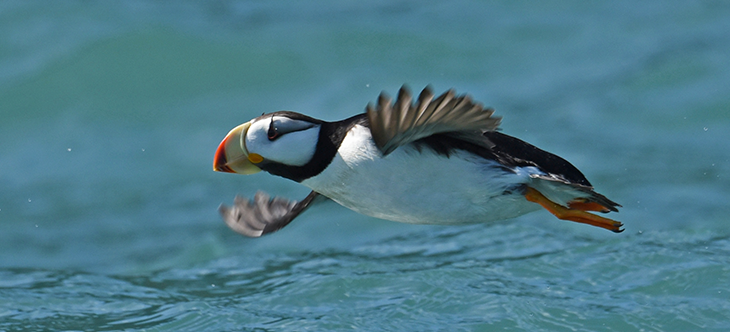
But it’s not the only one. Walsh and other scientists analyze climate data with math and computer models to study weather events. They’re finding ways to quantify, or measure, the impact of climate change. They’re like sports scientists studying a player who hit 10 home runs in a single game. Did he have a really good night? Or did he cheat in some way? And how can you know for sure?
The influence of climate change
“The climate is clearly changing,” says Kevin Trenberth. He’s a climate scientist at the National Center for Atmospheric Research in Boulder, Colo. “The atmosphere is changed,” he explains. “Carbon dioxide has increased, and it’s not slowing down.”
Climate and weather are related, but they’re not the same. Climate describes patterns of weather in an area over long periods of time. Weather refers to specific events that happen, such as hot days or thunderstorms. Heat waves, droughts, wildfires, hurricanes, tornadoes and floods are all examples of extreme weather events.
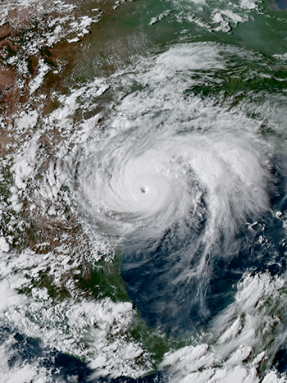
For decades, scientists have predicted that climate change would worsen extreme weather events and make them more frequent. And signs have emerged that this has already begun.
“Climate change has made many types of extreme weather disasters significantly worse,” says Michael Wehner. “And it will continue to get worse.” Wehner is a climate scientist at the Lawrence Berkeley National Laboratory in California.
Connecting climate change to weather can be tricky. Still, it’s not impossible. And in recent years, scientists have developed ways to do it with confidence. An important part of that process is asking the right questions, says Stephanie Herring. She’s a climate scientist at the National Centers for Environmental Information in Boulder, Colo.
People often want to know if anthropogenic climate change caused some event, she notes. But there’s no way to answer that question. Any weather event could happen by chance, after all. An event could be part of the planet’s natural ups and downs in weather.
It’s better, she says, to ask about the influence of climate change. An area’s climate lays the foundation for an extreme event. Scientists can then probe: Did climate change make the event worse?
Wehner points to Hurricane Harvey. It formed as a weak tropical storm in the Gulf of Mexico in late August 2017. After turning very strong, very fast, it parked over southeastern Texas. Then it stayed there for three long days. During that time, it dumped more than 1.2 meters (3.9 feet) of water on the region. The city of Houston flooded. So did dozens of other coastal cities and towns. In some places, the combination of rain and storm surge from the sea added 3 meters (10 feet) of water. That’s about as deep as the diving area in a swimming pool.
To call Harvey unusual would be like calling the sun hot. It’s a terrific understatement. “Harvey was essentially unforeseen,” Wehner said at a scientific meeting in December 2017. Scientists expect to see storms like Harvey only about once every 3,000 years or so.
In the wake of Hurricane Harvey, three groups of scientists studied the storm. They were scouting fingerprints of climate change. And they found them, they reported in a trio of papers last December. Each one concluded that the storm was much worse than it would have been if climate change were not a factor.
Wehner led one of the studies. His group estimated that climate change increased total rainfall by at least 19 percent, but probably closer to 34 percent. Without climate change, flooding would likely have been far less severe. Another group reported that climate change tripled the risk that a Harvey-sized storm would occur. The third group estimated that the risk of a Harvey-sized storm had increased six-fold since 1990, thanks to climate change.
Hurricane Harvey killed an estimated 88 people. It also wreaked hundreds of billions of dollars in damage. Like the Blob, Harvey wouldn’t have been so catastrophic without a combination of natural factors and human-induced climate change. “There was a significant human influence on the amount of precipitation that was produced by Hurricane Harvey,” Wehner concludes.
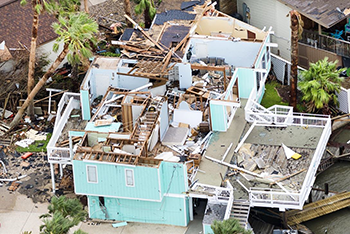
And Harvey was only the beginning. Spinning close on its tail came Irma, one of the strongest Atlantic storms on record. In early September, Irma hit land seven times, causing destruction on many Caribbean islands. It traveled north through Florida then pummeled Georgia and South Carolina. Along the way, it spun up 25 confirmed tornadoes. Then came Maria, which devastated the Dominican Republic and Puerto Rico. Those islands are still recovering.
Studies like Wehner’s don’t show that these hurricanes were caused by climate change. Hurricanes happen, climate change or not. They’re an expected part of nature. Climate change, however, is likely making them worse. “The storms are more intense,” says Trenberth. “The extremes are greater, and this matters.”
The climates that didn’t happen
The first study to connect extreme weather to some type of human influence was published in 2004. Peter Stott led it. He works at the Met Office. That’s the United Kingdom’s government weather office, in Exeter. A heat wave had hit Europe a year earlier. It caused the hottest summer in at least 600 years! Tens of thousands of people died in France, Germany, Italy and other countries. Stott knew it was impossible to ask if human activity was the sole culprit. But he found a way to measure whether it had made the heat wave worse.
Stott and his colleagues approached the problem in a way that many scientists still use. They collected the temperature records from across Europe for the time of the heat wave. Then, they compared those data to their best estimate of what might have happened if climate change had not been involved.
The scientists were aided by a computer program called a model. This computer model uses weather data to simulate the climate. Then, the model can make predictions about what kind of weather might be expected.
A simulation imitates real life. It describes a situation that could have happened but didn’t. If there were a simulation of your own life, you could see what might have happened if you hadn’t — or had — finished your homework. Or if you’d chosen to go to the park or band practice after school yesterday. Or how your life would be different if you’d moved to another state.
A personal simulation is impossible. (That’s probably a good thing. It would raise the risk of FOMO.) But climate simulations aren’t. Stott used a computer model that produced four simulations of how the climate could have changed over time due to natural ups and downs in weather. Stott’s simulation started plotting these changes going back as far as 1851. That year is near the beginning of the time when people started burning fossil fuels to produce energy. Burning fossil fuels releases greenhouse gases into the atmosphere. These gases trap heat close to the planet’s surface, causing temperatures to rise.
Without human activity factored in, Stott’s simulations of climate did not produce extreme heat waves like the one in 2003. He also ran simulations of the climate, starting in 1851, which did include greenhouse gases from human activity. Those simulations led to big heat waves. Then the researchers compared those simulations to what actually happened. With this approach, says Stott, “we can calculate how our risk has changed.”
The team concluded that human activity hadn’t just increased the probability of such an extreme heat wave. It doubled it!
Many attribution studies take the same approach as Stott’s did. They compare simulated climates to real-world data. (That’s how Walsh studied the Blob.) And these types of studies have improved since 2004. Scientists have developed better climate models, for instance, and more of them. Stott only used models of the atmosphere. In fact, some modern computer models include air, water and land. One recent study found the influence of climate change in seasonal cycles, measured in the atmosphere. More data are collected now, and fast computers can quickly analyze those data. More datasets also are available now, in part because many scientists upload their data to the internet to share with others.
Researchers have even developed new ways to ask questions about attribution. Some scientists use what’s called a “storyline” approach. Instead of looking at past climates that didn’t happen, they look for climate change in specific events. For example, Trenberth and his colleagues, in Boulder, traced how extra energy from warmer oceans likely boosted Harvey’s extreme rainfall. They simulated what Harvey would have been like without the influence of climate change. And it was much less wet.
The beginning of the study
“There is no one best way to do attribution,” says Herring. “The question isn’t, can you do it? The question,” she says,” is how do you come up with the best answer?” It’s important for scientists to run experiments in such a way that other scientists will have confidence in its result.
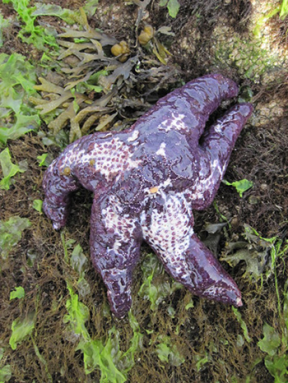
One place to find attribution studies is in a journal called the Bulletin of the American Meteorological Society, or BAMS. Each year, the journal publishes a special issue that highlights attribution research. In total, those special issues have published 131 attribution studies. Not every study finds the fingerprints of climate change. Indeed, of those 131 studies, Herring notes that about one-third found no impact from climate change on the weather extremes investigated. Those events would likely have happened anyway, with or without human activity. The other two-thirds, though, had all been affected by humanity’s influence on climate.
Most attribution studies measure how much climate change worsened an event. Walsh’s study was different, though. The Blob wasn’t just worsened by climate change. It wouldn’t have happened without it, according to his models.
Walsh’s study appeared in the January 2018 issue of BAMS. Two other studies in that issue identified other events that needed climate change to happen. In one, meteorologists from Japan reported that a 2016 heat wave in Asia wouldn’t have happened without climate change.
In the other, U.S. researchers analyzed temperature data across the world in 2016, the hottest year on record. On average, temperatures hit 1.2 degrees C (2.2 degrees F) above average.
Tom Knutson led that study. He’s a meteorologist at the U.S. Geophysical Fluid Dynamics Laboratory in Princeton, N.J. His group ran simulations using seven computer models. They even ran combinations of models. No matter how the researchers ran the simulations, though, there was no way to pin the high heat on nature alone. They reported that the record-setting warmth was possible only because of “human-caused warming.”
Knutson is careful to point out one limitation of his study. It’s a limitation of all model-based studies. “This, of course, is a model-based estimate, and we don’t want to confuse it with the truth,” he says. Scientists have confidence that their models accurately represent real scenarios. But because they are scenarios, and not reality, there’s room for error.
But in science, scientists are always trying to get more precise in their measurements and analyses. And when all the models point to the same conclusion, scientists gain confidence. In the case of the global heat record, “it is our best record,” Knutson says. “And we’d have to be off by a pretty large factor” to be in error.
Scientists who work on attribution studies say this research serves an important role. “Climate” is kind of a confusing idea. Because it measures weather over long periods of time, it’s hard to see day-to-day. But people do know what it’s like to hunker down during a hurricane and hope that their homes won’t flood. They can see the sea level rising in their coastal towns. They know how bad a heat wave can be.
Herring says the field is still growing. She is seeing researchers from other fields get interested in attribution science. They include marine biologists, public health researchers and people who work for insurance companies. They’re working with climate experts to understand not only how climate changes the weather, but how it changes life itself.
Attribution science connects devastating events to climate change. “This is where the research has a real value, I think,” says Stott. It makes climate change personal.







